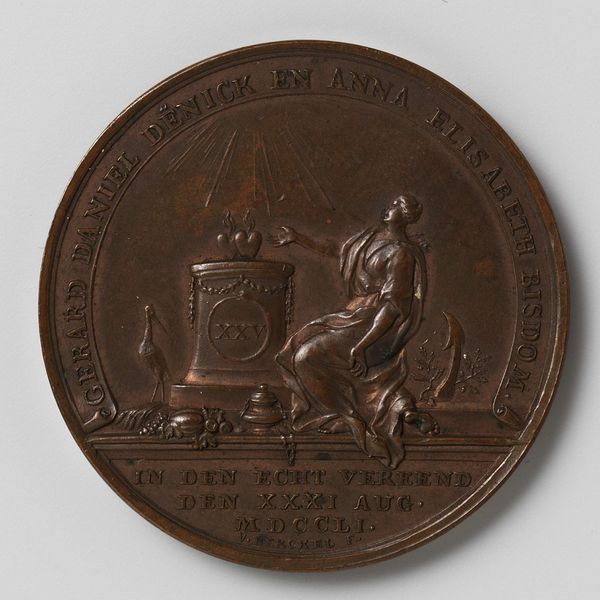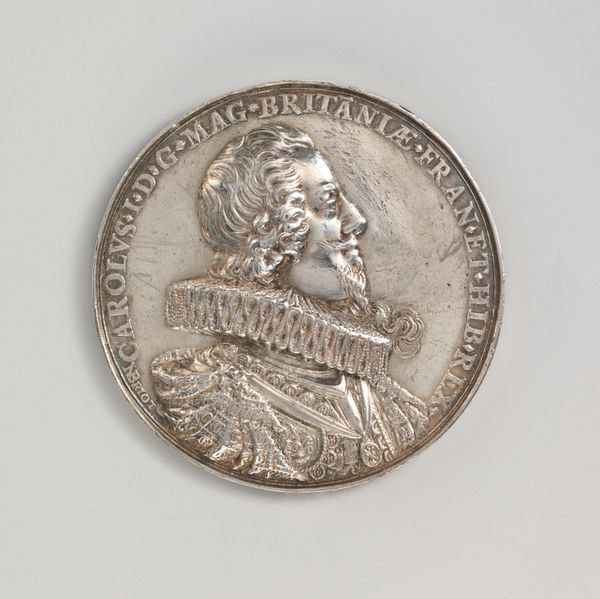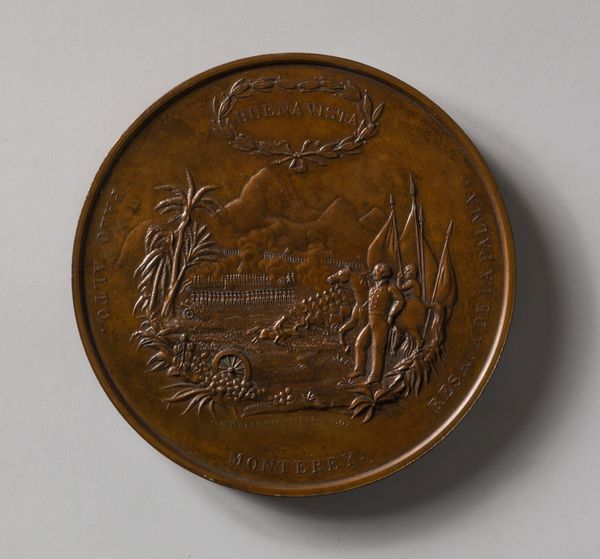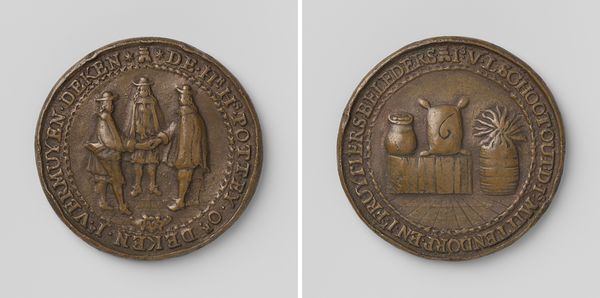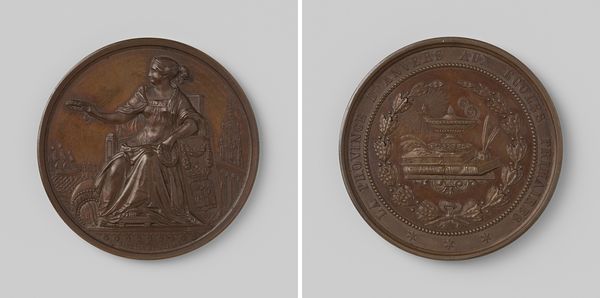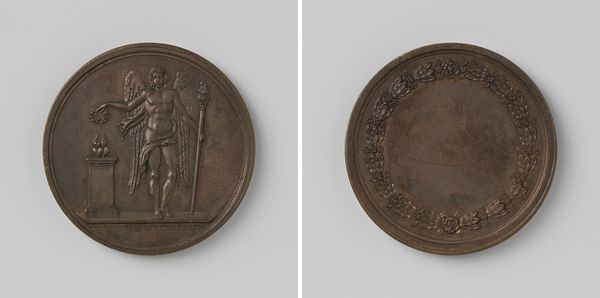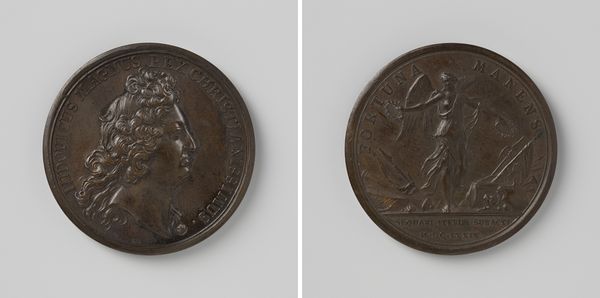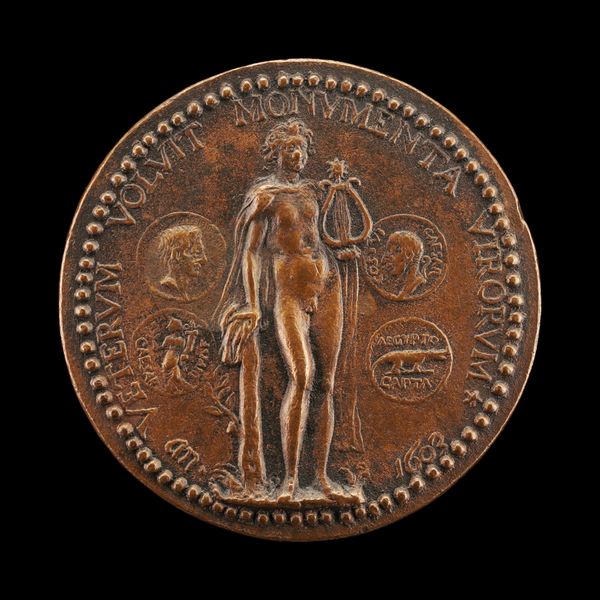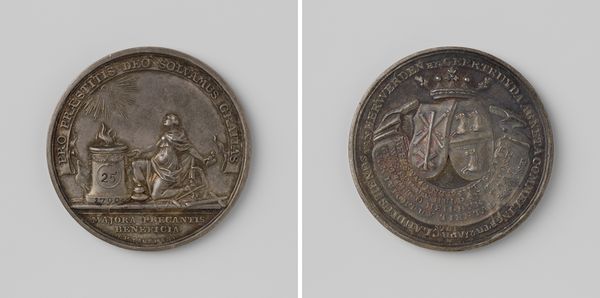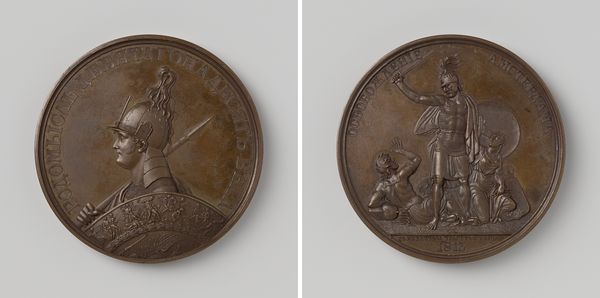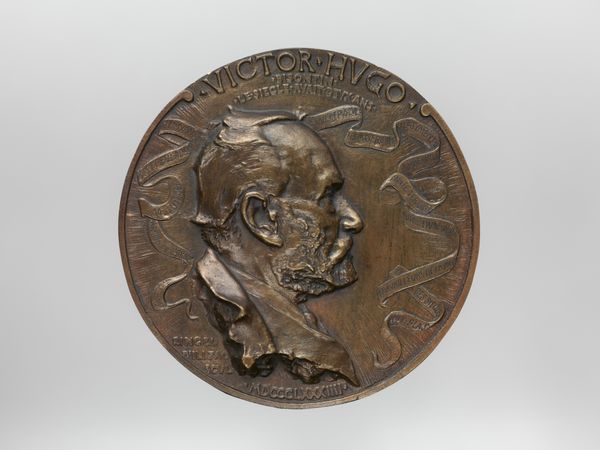
Commemorating Lord Nelson's Victory of the Nile in 1798 18th century
0:00
0:00
Dimensions: Diameter: 47 mm
Copyright: Public Domain
Curator: This bronze medal commemorates Rear-Admiral Lord Nelson's victory at the Battle of the Nile in 1798. Editor: It’s quite striking! The warm, patinated bronze gives it a feeling of age and importance, even before considering its subject. It looks heavy; you can practically feel the weight of it. Curator: Exactly. Medals like these weren't just decorative. They were explicitly produced to celebrate victories and heroes, solidifying their place in the national narrative. Think of them as miniature monuments. Editor: You can see that monumentality. Look at how the figure of Britannia is composed on a rocky outcrop. Her hand is above the portrait almost placing a crown of laurel upon Lord Nelson’s brow. What process was involved in making it? Curator: Lost wax bronze casting would be the likely process. The inscriptions are sharp, and the lines defining the figure of Britannia are fine and confident. Nelson's likeness is captured in meticulous detail. Medals such as this were also part of the increasing artistic focus on representing and mythologizing leaders and celebrating their triumphs in the 18th and 19th century. Editor: These commemorative items often reinforced societal hierarchies and patriotic ideals through their very production and circulation. How was the material obtained to mass produce such a work? Who benefitted and who was extracted to cast Lord Nelson’s Glory in bronze? It brings up questions around how material culture operates. Curator: A crucial point. Beyond its aesthetic and commemorative value, its social context is paramount. What statements do public artworks and awards make? Who do they serve? Who is elevated? Editor: I'm still drawn to the physical properties, to the weight and feel of this object made from raw materials— it’s more than a symbol. Curator: Indeed. Its creation involved complex industrial and social systems. Looking closely can remind us about the context and motivations behind the work, offering richer insights into history. Editor: For me, it serves as a physical reminder of our relationship with objects—to understand that every medal has a history that extends beyond just commemoration.
Comments
No comments
Be the first to comment and join the conversation on the ultimate creative platform.
